8 Species of Woodpeckers in Pennsylvania (With Pictures)
Last Updated on
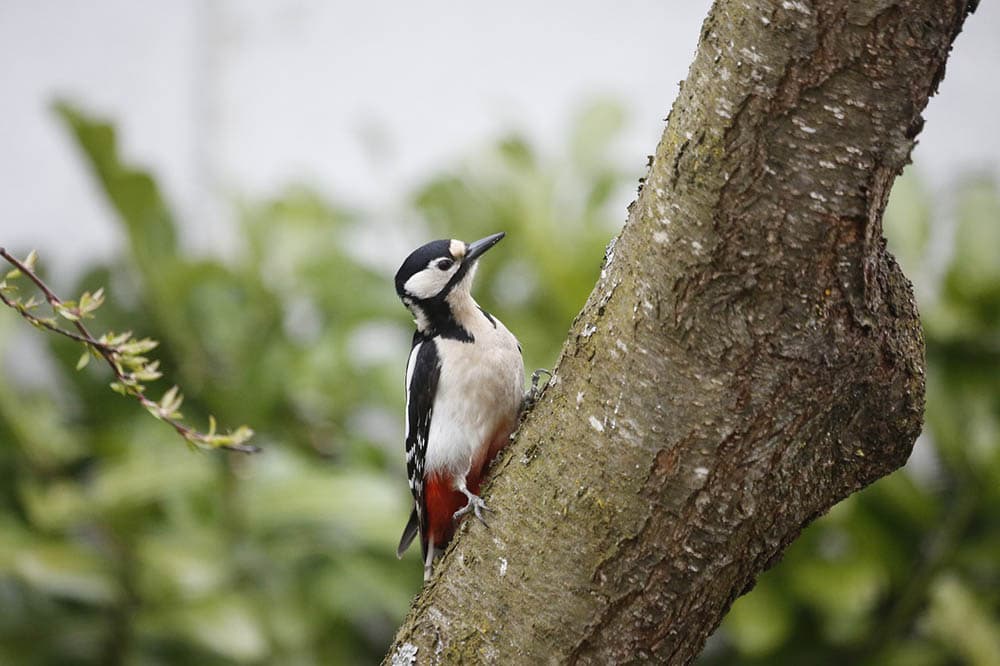
Woodpeckers are great for beginner bird watchers because their loud drumming noise makes them easy to find. There are many species of these attractive birds, and you can find them all over the world. Several species can be found in Pennsylvania, and if that’s where you live, keep reading as we provide you with a complete list.

The Top 8 Species of Woodpeckers in Pennsylvania
1. Red-Bellied Woodpecker
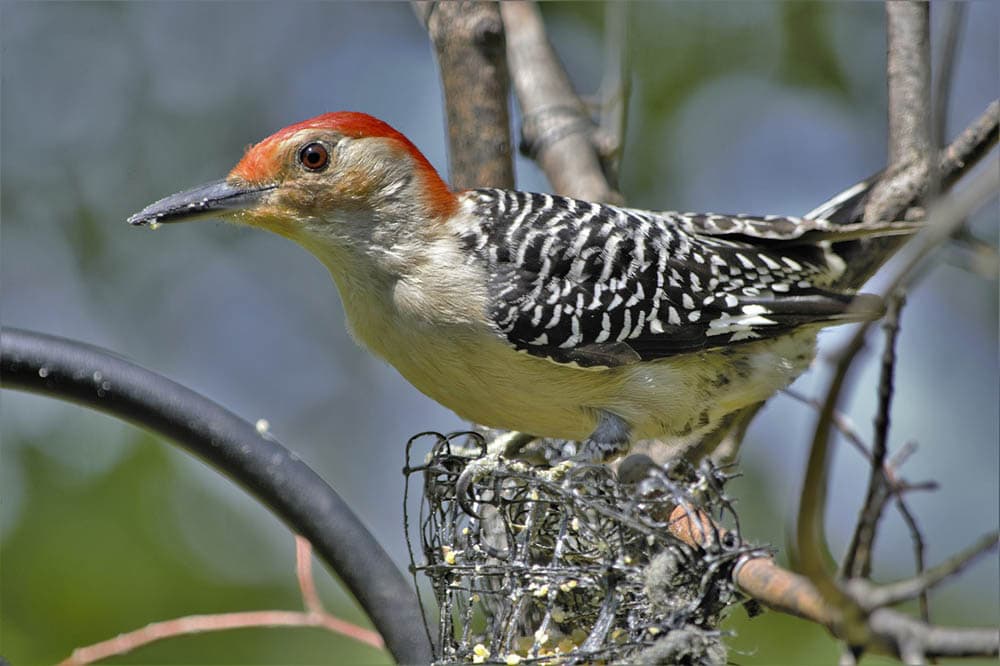
| Wingspan: | 15–18 inches |
| Food: | Berries, nuts, insects |
The Red-Bellied Woodpecker is a variety that is more popular in the southern states, but you can find it year-round in Pennsylvania. It’s an omnivore that enjoys forest life but adapts well to life in cities and towns. It’s easiest to find them during the mating season in the winter.
2. Hairy Woodpecker
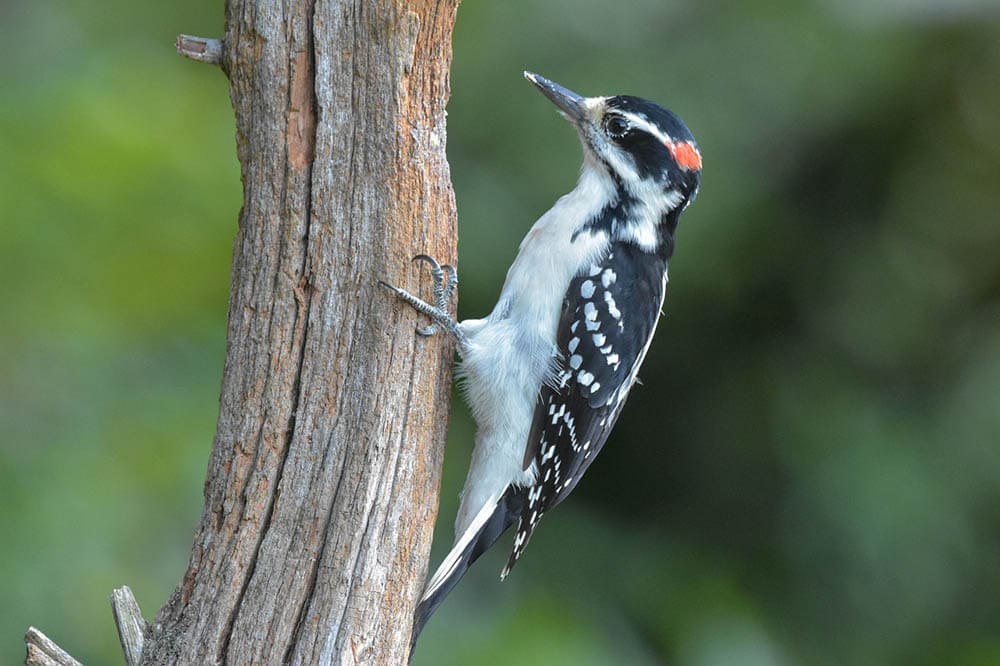
| Wingspan: | 15 inches |
| Food: | Berries, nuts, insects |
The Hairy Woodpecker is native to many areas of the United States, and you can find it easily in Pennsylvania. It has a black-and-white body with a small red patch on the back of the head. These birds like to work on the tree trunk and main branches, and you can even find them feeding at the base of your house door or on fallen tree trunks.
3. Downy Woodpecker

| Wingspan: | 3–4.5 inches |
| Food: | Insects, berries, seeds |
The Downy Woodpecker is a small bird that you can find all across Pennsylvania and the rest of the United States. These birds like to flock with other birds during the winter months for safety reasons. The males and females also divide the terrain to collect food more efficiently.
4. Pileated Woodpecker
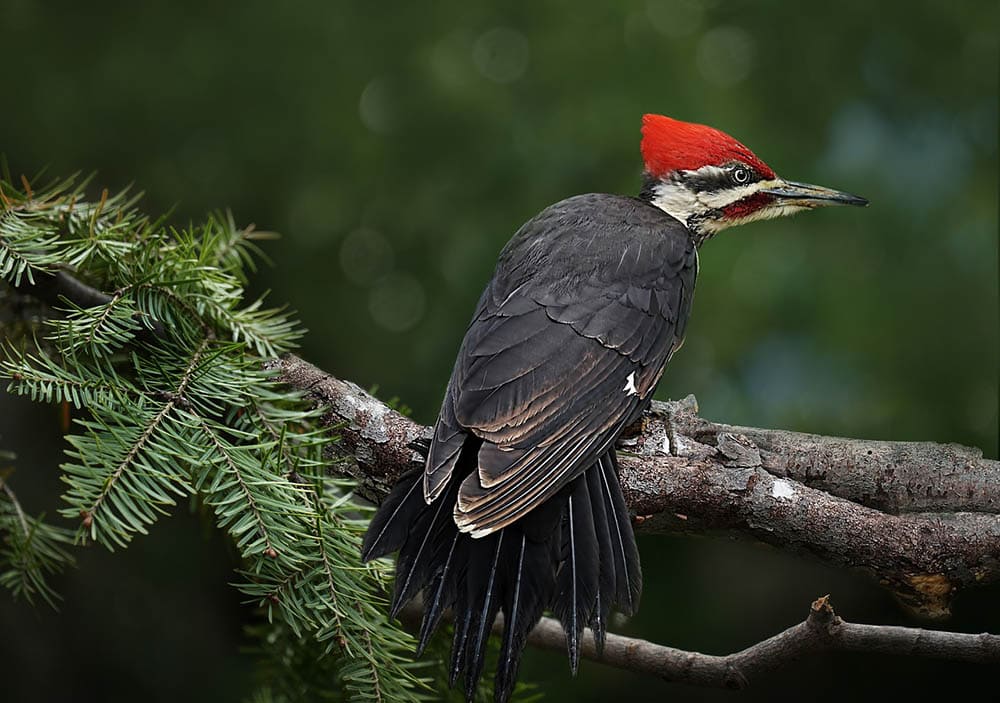
| Wingspan: | 26–30 inches |
| Food: | Carpenter ants, fruit, nuts |
The Pileated is the largest woodpecker that you can find in Pennsylvania, with a wingspan that can grow to 30 inches. However, it’s also one of the hardest birds to see. It’s all black except for a white head, with black-and-red stripes and a pointed red crest that almost resembles a mohawk. These birds have a broad range, and since they are so big, they prefer large old-growth trees.
5. Yellow-Bellied Sapsucker

| Wingspan: | 8–8.5 inches |
| Food: | Tree sap, insects, fruit, nuts |
The Yellow-Bellied Sapsucker is one of the stranger woodpeckers that you will find in Pennsylvania because it primarily eats tree sap. However, it will also eat insects, fruits, nuts, and more if necessary. Instead of drilling large holes that it can nest in, the Yellow-Bellied Sapsucker prefers ¼-inch holes that release sap so it can feed.
6. Northern Flicker
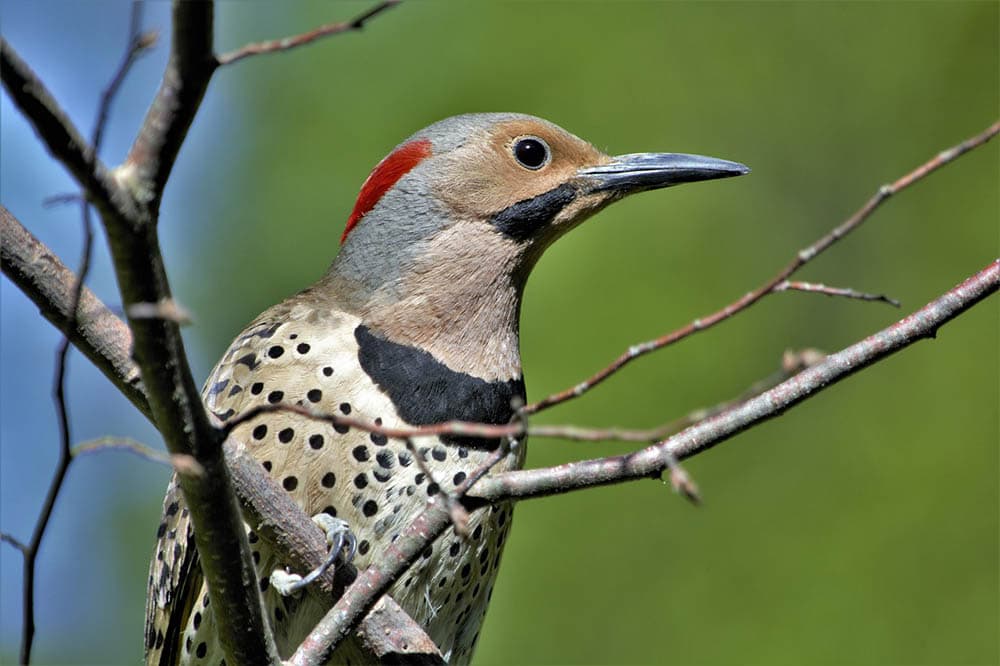
| Wingspan: | 16–20 inches |
| Food: | Insects, fruit, nuts |
The Northern Flicker is a large woodpecker that you can find in Pennsylvania. It has a wingspan of 16–20 inches. It’s one of the only woodpecker varieties to migrate for the winter, and it also spends most of its time on the ground foraging for food, further differentiating it from other varieties. These birds usually don’t eat from bird feeders, but they will enjoy the occasional birdbath.
7. Red-Headed Woodpecker
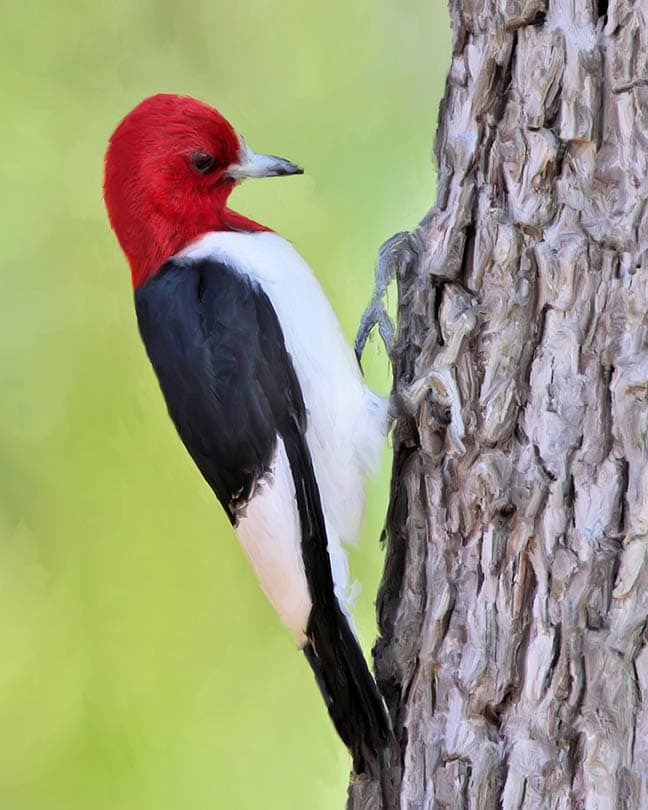
| Wingspan: | 16 inches |
| Food: | Insects, fruit, nuts |
The Red-Headed Woodpecker has a bright red head that almost looks like it’s wearing a hood. It has a longer tongue than most other varieties, which can extend more than 2 inches from the end of the bill. It uses this long tongue to reach into ant hills and other locations to pick up many insects at a time.
8. Black-Backed Woodpecker
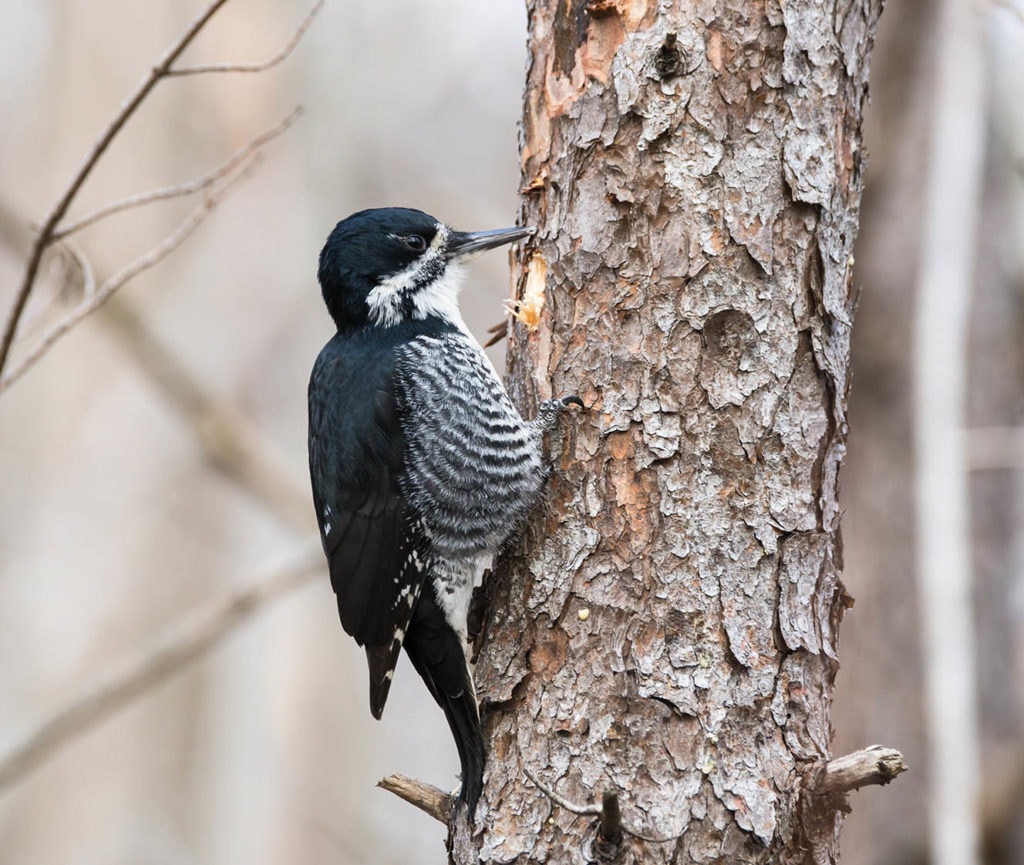
| Wingspan: | 16 inches |
| Food: | Insects, fruit, nuts |
As the name suggests, the Black-Backed Woodpecker has a solid black back. The face is also black and has a single white stripe running from front to back, just below the eye. The males have a yellow patch, and they like to forage around in dead trees for food. They also spend more time in one spot than other woodpecker varieties.
Why Do Woodpeckers Peck?
Woodpeckers will go to work on a tree for several reasons. The primary reason is that they like to forage for insects, as several types live in the wood, including termites, carpenter ants, and many different kinds of beetles. The woodpecker will often live in the hole that it creates, and other animals can use the hole once they leave. A woodpecker may also begin pecking at a tree to communicate with other woodpeckers. Unlike many of the songbirds that live in Pennsylvania, these birds communicate by drumming on the tree.
- Related Read: 7 Species of Woodpeckers in Tennessee

In Conclusion
There are several different species of woodpeckers that you can find in Pennsylvania. Of these, the largest is the Pileated Woodpecker, but it can be difficult to find unless you live near an area with large old-growth trees. The Hairy Woodpecker and the Downy Woodpecker are quite easy to find, and they might even frequent your bird feeder if you keep it stocked with black sunflower seeds. The others are also common, so listen carefully the next time that you are walking through the woods, and you might hear one hammering off in the distance.
Featured Image Credit: schauhi, Pixabay
About the Author Robert Sparks
Robert’s obsession with all things optical started early in life, when his optician father would bring home prototypes for Robert to play with. Nowadays, Robert is dedicated to helping others find the right optics for their needs. His hobbies include astronomy, astrophysics, and model building. Originally from Newark, NJ, he resides in Santa Fe, New Mexico, where the nighttime skies are filled with glittering stars.
Related Articles:
Monocular vs Telescope: Differences Explained (With Pictures)
10 Types of Hummingbirds in Arkansas (With Pictures)
8 Types of Hummingbirds in Nebraska (With Pictures)
5 Types of Hummingbirds in Idaho (With Pictures)
3 Types of Hummingbirds in Mississippi (With Pictures)
8 Types of Hummingbirds in Kansas (With Pictures)
5 Types of Hummingbirds in West Virginia (With Pictures)
5 Types of Hummingbirds in Ohio (With Pictures)
